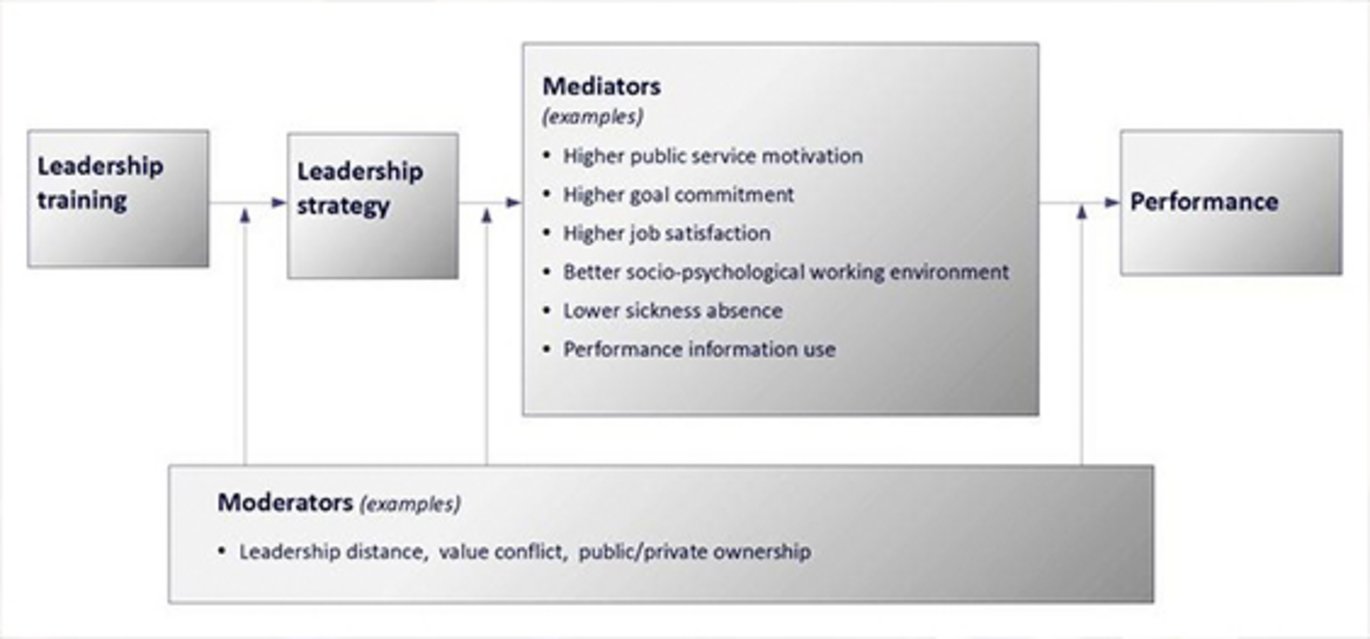Leadership training: Does it make a difference?
Finding new ways to improve performance is one of the key objectives of the research within Management as well as Public Management. The research project LEAP at Aarhus University intends to contribute to this rapidly developing field of research.

The model shows the elements of the LEAP project.
This article is written by Anne Bøllingtoft, associate professor at Aarhus BSS and participant in the LEAP project.
The LEAP project (Leadership and Performance) examines how leadership training affects leadership strategies and how leadership strategies affect organisational performance.
The project is a field experiment with 500 publicly and privately employed leaders and their 10,000 employees. Leaders from bank branches, the Danish Customs and Tax Administration (SKAT), day care centres, and secondary and primary schools in Denmark were randomised into three treatment groups and a control group. The leaders in the treatment groups received different types of leadership training. Leadership training was provided in the following leadership strategies:
- The transactional leadership strategy is based on a quid pro quo logic, where leaders apply rewards contingent on effort and/or results.
- The transformational leadership strategy is the leader’s attempt to develop, share, and sustain a vision in order to motivate employees to transcend their own self-interest and achieve the organisation’s goals.
- A combination of transactional and transformational leadership strategy.
All three leadership strategies have previously documented positive effects on organisational goal attainment and performance. But we need additional knowledge related to which strategy results in the most positive effects on performance and whether a given strategy might be more suitable for public or private organisations or more suitable for welfare or financial service providers.
To examine the effects of the training, the project compares changes in perceived leadership between the three training programmes and the control group.
Prior to the leadership training, the researchers were able to show that the leaders tended to overrate their use of leadership strategies when compared with the employees’ perception of their leader’s leadership strategy.
This changed after the leaders in the three treatment groups received the leadership training: The employees actually perceived their leader to implement the specific tools they were taught during the leadership training, and the employees saw their leaders as more active within the trained leadership strategy. Through leadership training, it is in fact possible to change a leader’s leadership strategy.
The next step in the project is to examine how the leadership strategies affect organisational performance. Performance data will e.g. be based on register data such as sickness absence as well as satisfaction measurements.
Leadership scholars, political scientists, public administration researchers, psychologists and economists are participating in the project and have joined forces to find ways to improve organisational performance in Denmark and elsewhere. The research project will run until the end of 2017. Read more here